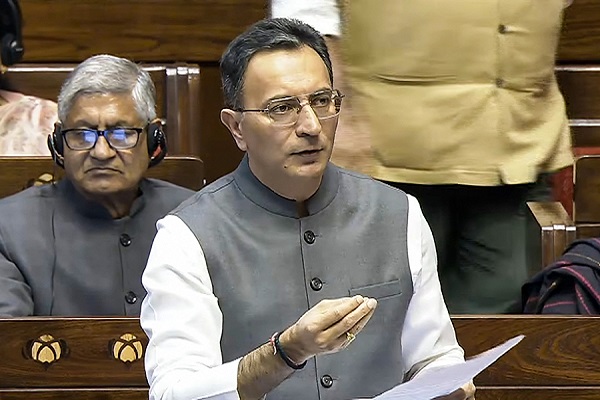States` fiscal deficit at only 16.5% of BEs for 1QFY22 - Motilal Oswal

States’ fiscal deficit at only 16.5% of BEs for 1QFY22
Combined spending grows only 9.4% YoY in 1QFY22
* Based on the monthly accounts available for 16 states (together accounting for ~76% of all states), total receipts of all states grew 29.7% YoY in 1QFY22, while total spending grew slowly at 18% YoY in 1QFY22. With this, states have achieved 16.8%/16.7% of their receipts/spending of FY22 budget estimates (BEs), better than 13.6%/15.4% of 1QFY21 BEs. States’ fiscal deficit during 1QFY22 accounted for 16.5% of FY22 BEs, lower than 25% of 1QFY21 BEs, but higher than average 10.1% of BEs in the three years prior to the COVID-19 outbreak.
* States’ total taxes grew 44.7% YoY in 1QFY22, supported by a favorable base (down 35.4% YoY in 1QFY21). States’ own non-tax revenue receipts grew at a strong pace. However, ‘grants from the Centre’ declined by 3.6% YoY in 1QFY22 due to a massive growth (51% YoY) in 1QFY21. Within states’ own taxes, the collection of stamp duty and registration charges more than doubled in 1QFY22, with all states showing sharp increases, except Odisha (OD).
* Just like receipts, states’ spending too grew sharply in 1QFY22 due to a low base. Capital spending of states grew 143.1% YoY in 1QFY22 due to a 57% YoY contraction in 1QFY21. Revenue spending by states grew 10.8% YoY in 1QFY22 from a growth of 3.1% YoY in 1QFY21.
* Individual analysis of states suggests that six out of 16 states – CT, HR, KL, MP, RJ, and TS – had already achieved a quarter of their full-year fiscal deficit target in 1QFY22. In fact, KL has already exhausted 74% of its FY22 BE, while the fiscal deficit for the others was in the 23-31% range. Two states – Jharkhand (JH) and OD – have run fiscal surpluses in 1QFY22, and the fiscal deficit of remaining eight states was less than 15% of 1QFY22 BEs (only 2% of BEs in MH).
* Combining finances of states with the central government for 1QFY22 suggests that total receipts of the general government grew 115% YoY in 1QFY22 on the back of 39% YoY contraction in 1QFY21. Combined spending (after adjusting for ‘grants from the Center to states’) grew only 9.4% YoY in 1QFY22 from a growth of 1.6% YoY in 1QFY21. While capex grew 58% YoY on the back of a low base, the three-year CAGR has been just 5% YoY in 1QFY22.
* A sharp contraction in 1QFY21 leads to optically very-high growth in fiscal receipts/spending in 1QFY22. From a two-year CAGR (1QFY20-1QFY22) perspective, general government receipts have grown faster (14% YoY) than spending (5% YoY). Although the two-year CAGR of total spending by the Center and states (unadjusted) was ~6% each, growth in receipts was very different at just 2% for states, but 37% for the Center (partly explained by higher cess on fuel items).
* Lastly, because of strong growth in combined receipts, but weak spending growth, the fiscal deficit of the general government was only 17.6% of 1QFY22 BEs vis-à-vis 57.6% in 1QFY21 and an average of 44% in the prior three years. The fiscal deficit of the general government was 8% of GDP in 1FY22 (assuming ~30% of nominal GDP growth in 1QFY22) visà-vis 21.1% of GDP in 1QFY21.
To Read Complete Report & Disclaimer Click Here
For More Motilal Oswal Securities Ltd Disclaimer http://www.motilaloswal.com/MOSLdisclaimer/disclaimer.html SEBI Registration number is INH000000412
Above views are of the author and not of the website kindly read disclaimer





















